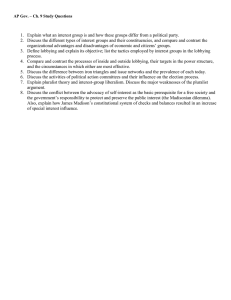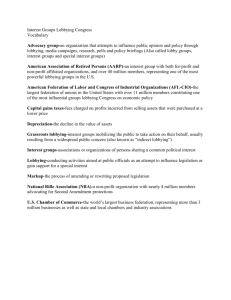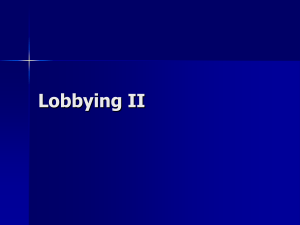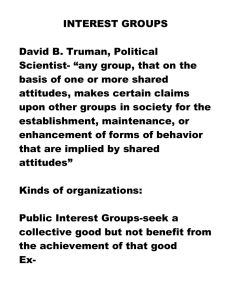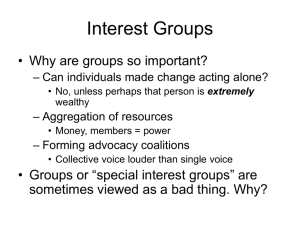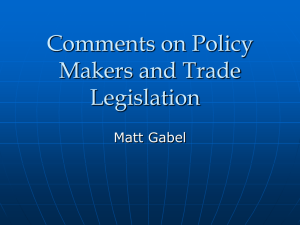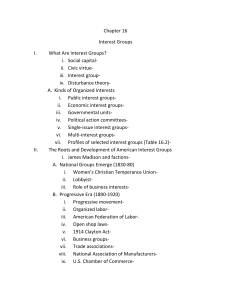American Government: Political Parties & Interest Groups Study Guide
advertisement
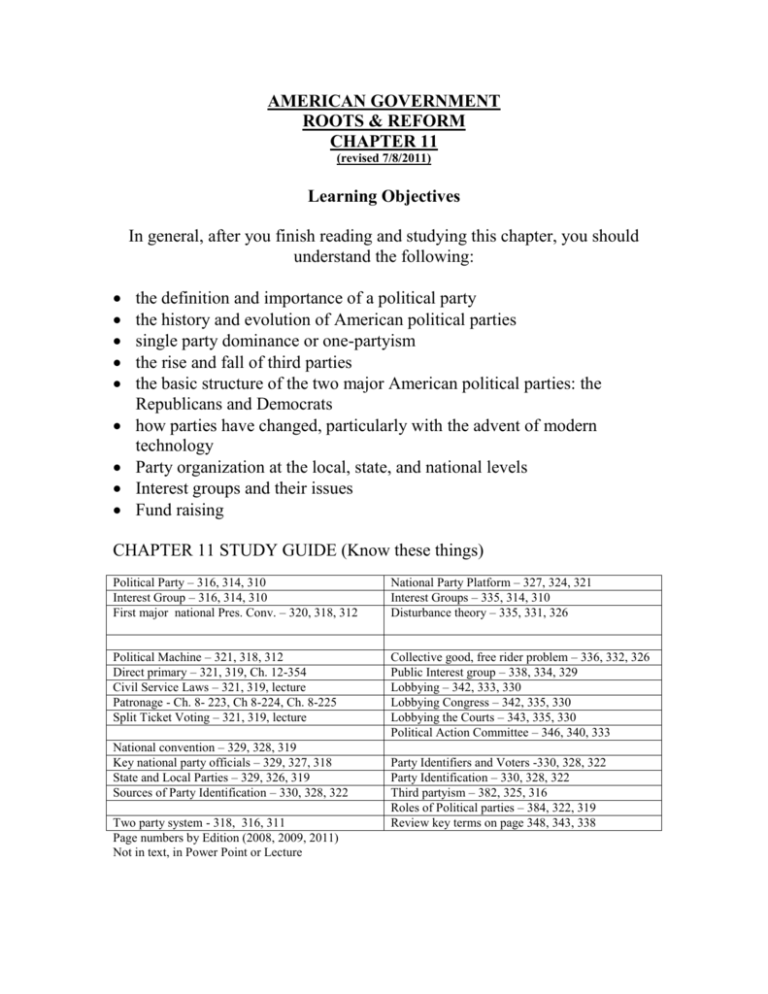
AMERICAN GOVERNMENT ROOTS & REFORM CHAPTER 11 (revised 7/8/2011) Learning Objectives In general, after you finish reading and studying this chapter, you should understand the following: the definition and importance of a political party the history and evolution of American political parties single party dominance or one-partyism the rise and fall of third parties the basic structure of the two major American political parties: the Republicans and Democrats how parties have changed, particularly with the advent of modern technology Party organization at the local, state, and national levels Interest groups and their issues Fund raising CHAPTER 11 STUDY GUIDE (Know these things) Political Party – 316, 314, 310 Interest Group – 316, 314, 310 First major national Pres. Conv. – 320, 318, 312 National Party Platform – 327, 324, 321 Interest Groups – 335, 314, 310 Disturbance theory – 335, 331, 326 Political Machine – 321, 318, 312 Direct primary – 321, 319, Ch. 12-354 Civil Service Laws – 321, 319, lecture Patronage - Ch. 8- 223, Ch 8-224, Ch. 8-225 Split Ticket Voting – 321, 319, lecture Collective good, free rider problem – 336, 332, 326 Public Interest group – 338, 334, 329 Lobbying – 342, 333, 330 Lobbying Congress – 342, 335, 330 Lobbying the Courts – 343, 335, 330 Political Action Committee – 346, 340, 333 National convention – 329, 328, 319 Key national party officials – 329, 327, 318 State and Local Parties – 329, 326, 319 Sources of Party Identification – 330, 328, 322 Two party system - 318, 316, 311 Page numbers by Edition (2008, 2009, 2011) Not in text, in Power Point or Lecture Party Identifiers and Voters -330, 328, 322 Party Identification – 330, 328, 322 Third partyism – 382, 325, 316 Roles of Political parties – 384, 322, 319 Review key terms on page 348, 343, 338

